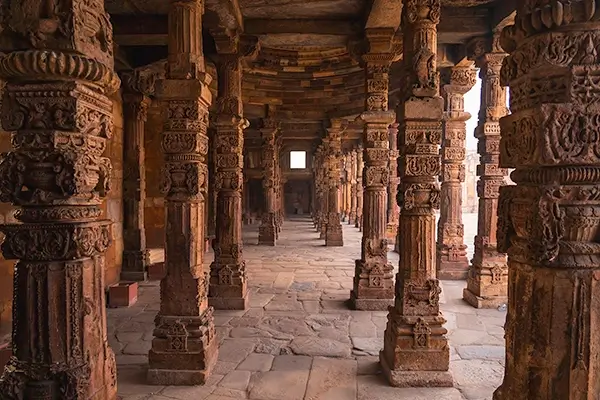Rising dramatically above Jodhpur’s skyline, Mehrangarh Fort is impossible to miss. Its sheer presence commands the old town, a sandstone giant visible from almost every corner of the Blue City.
For more than 500 years, this was the seat of power in Marwar, the Rajput kingdom that once ruled western Rajasthan. Within its towering walls, generations of Rathore rulers lived in palaces overlooking the city below.
What sets Mehrangarh apart is not only its dominance of the landscape but also its remarkable state of preservation. From finely carved lattice windows to its maze of sunlit courtyards and richly decorated period rooms, the fort remains Jodhpur’s crowning glory and an essential stop for any visitor.
Plan your visit to Mehrangarh Fort with this guide, covering everything from the best time to visit and ticket details to the must-see highlights inside the fort.


.jpg)
Mehrangarh Fort Overview
Location: Sodagaran Mohalla, Jodhpur
Entrance Fee: ₹800 ($9)
Timings: 9am-5pm
Best Month to Visit: November to March
Tickets: Buy online here
Want to explore Mehrangarh Fort with an expert? Book this highly rated guided tour to uncover the fort’s rich history and hidden stories.
.webp)
The Citadel of the Sun
In 1459, Maharaja Rao Jodha moved his capital from Mandore to the newly founded city of Jodhpur. To protect his growing kingdom, he began building Mehrangarh Fort atop Bhaurcheeria Hill, a steep rocky outcrop that towers 122 meters above the city.
Named after the Rathore deity Surya—the sun god—mehra means “sun” and garh means “fort,” earning it the title “the Citadel of the Sun.”
Over the centuries, successive rulers expanded the complex, adding palaces, gates, temples, and intricately carved facades. Today, Mehrangarh stands as one of India’s largest and most beautifully maintained forts.
Stay protected while exploring Rajasthan with Heymondo and enjoy an exclusive 5% discount on travel insurance.
Good to Know Before You Visit
Mehrangarh follows a set walking route, unlike forts such as Agra Fort or Delhi’s Red Fort, where you can wander freely. The pathway guides you through every major section with minimal backtracking. Many of the period rooms are viewed from behind railings to protect their delicate interiors, which has helped preserve them exceptionally well.
.webp)
A small cafe near the entrance serves coffee, tea, and light snacks. Toilets are located at Suraj Pol, the museum gate; the next set is only available near the museum shops at the end, so it’s best to stop here.
Wear comfortable shoes and plan for at least two hours to explore the fort at a relaxed pace.
Looking for the best place to stay in Jodhpur? Book RAAS Jodhpur, a luxurious boutique hotel in a beautifully restored haveli right in the heart of the old city.
A Walk Through Mehrangarh Fort
Fort Gates
Entry to the Mehrangarh fort is through a sequence of seven gates, each added at different moments in the fort’s long history. Your bags will be checked before entering through Jai Pol, the main gate; large bags or drones aren’t allowed inside.
.webp)
Just inside, you’ll find the ticket counter, where you can also hire a guide for around ₹500 ($5.60). Foreign visitors receive an audio guide with their ticket, available in English, German, French, Spanish, Italian, Japanese, Mandarin, and Korean.
Tip: Book your tour guide in advance and combine your visit with a historic tour of the Blue City.
.webp)
From Jai Pol, steep stone ramps lead through several gates toward Suraj Pol, the entrance to the museum complex. An elevator is available for ₹50 ($0.60), though taking it means skipping a few of the audio tour highlights.
.webp)
Shringar Chowk
Your first stop is Shringar Chowk, the Anointment Courtyard, where new rulers were once crowned on the marble throne still displayed on its raised platform.
Look up at the beautifully carved red sandstone walls surrounding the courtyard. Behind the latticed jali windows, royal women once watched ceremonies while remaining unseen by men outside their family.
Get your Airalo eSIM and stay connected instantly!
Howdah & Palanquin
Off the courtyard, side galleries display ornate howdahs—elephant seats crafted from wood and decorated with gold and silver—and palanquins used by the royal family as the preferred mode of travel. Many of the palanquins had veiled covers that kept noble women hidden from view.
.webp)
Hookah & Opium
Leaving the galleries, a hookah display often includes a playful demonstration from a staff member. Opium once played a significant role in royal courts. It was not only used for pain relief but also during rituals marking births, marriages, settling feuds, and even honoring the dead.
Planning a trip to India? Don’t forget your visa! Check out our quick guide to India’s visa requirements.
Daulat Khana Chowk
A narrow doorway leads you into Daulat Khana Chowk, the Courtyard of Treasures, once used for festivals and gatherings.
.webp)
This quiet corner showcases both symmetry and deliberate irregularities in the architecture, and the oldest surviving section of Mehrangarh is located in the eastern corner.
Tip: Keep an eye out for staff members leaning from windows, playfully echoing the way royal attendants did centuries ago.

Read: How to Travel India by Train
.webp)
Arms, Paintings & Textiles
Next, step into the galleries, home to one of the finest collections from the Mughal and Rajput eras, with clear English descriptions that make it easy to explore at your own pace. Highlights include:
- Mahadol Palanquin (1730): A carved-wood and glass palanquin brought to Jodhpur by Maharaja Abhay Singh as war booty.
- Akbar’s sword: A rare imperial piece once belonging to the Mughal emperor.
.webp)
- Idol of Gangaur: A beautifully dressed form of the goddess Parvati, depicted as a Rajput princess.
- Miniature Paintings: More than 3,000 works dating from the late 16th to the 19th century; look for the raw stones showing how their vivid colours were created.
- 19th-century Shield (Our Favorite): An intricately crafted piece with a leather base wrapped in cotton and richly adorned with silver thread, beads, and semi-precious stone

Read: Visit Jaipur: Rajasthan’s Pink City
.webp)
Period Rooms
Sheesh Mahal
Part of Maharaja Ajit Singh’s private residence, the Sheesh Mahal (Palace of Mirrors) dazzles with mirrored walls and ceilings. The European chandelier and wooden ceiling were added in the 19th century; the 18th-century original is displayed on the floor for preservation.
Discover Jama Masjid, Delhi’s grand architectural treasure. Read our quick guide for tips and highlights.
.webp)
Phool Mahal
Built in the 18th century by Maharaja Abhay Singh, Phool Mahal (Palace of Flowers) hosted private gatherings filled with music and dance. Its gilded floral motifs and stained-glass jalis make it one of the fort’s most opulent rooms.

Read: How to Visit Yamuna Ghat in Delhi
.webp)
Takhat Vilas
Once the private chamber of Maharaja Takhat Singh—the last ruler to live entirely within the fort—this room bursts with vivid floor-to-ceiling paintings.
European influences are also evident, such as colorful Christmas baubles hanging from the rafters and the fusion of European figures with traditional depictions of gods and legendary lovers.
.webp)
After leaving Takhat Vilas, pause at the outer corridors for some of the best views over Jodhpur before continuing to Sardar Vilas.
Sardar Vilas
Continue to Sardar Vilas, a long corridor that was once an 18th-century palace hall, later renovated in the 19th and 20th centuries. Today it displays beautifully crafted wooden doors and windows which were originally installed in the fort’s grand palaces.

Read: Climb Amer Wall: Jaipur’s Best Viewpoint
.webp)
Jhanki Mahal
Known as the Palace of Glimpses, Jhanki Mahal allowed royal women to watch ceremonies discreetly through delicate lattice screens. The hall now displays royal cradles from the late 19th to mid-20th century.
Peek through the jali screens yourself, and don’t forget to look up at the vivid blue-painted ceilings contrasting beautifully with the whitewashed walls.
Read: Tucked beneath the towering walls of Mehrangarh Fort, Jodhpur’s Rao Jodha Desert Park offers four quiet, scenic trails with sweeping views of the Blue City.
.webp)
Moti Mahal
The final room, Moti Mahal (Pearl Palace), is one of Mehrangarh’s oldest surviving chambers. Built in the 16th century by Maharaja Sawai Sur Singh, it served as the hall for private state meetings.
Its name comes from the walls’ pearl-like sheen, created by mixing lime plaster with finely crushed shells. When dozens of oil lamps once flickered in the niches, their light shimmered across the gold-leafed and mirrored ceiling.
Tip: Look closely for five small alcoves along one wall—special listening spaces where queens could discreetly hear court proceedings.

Read: Exploring Delhi’s Qutub Minar
.webp)
Zanana Deodi
The final stop is Zanana Deodi, the Palace of Queens, one of Mehrangarh’s most exquisite spaces.
The courtyard is enclosed by beautifully carved lattice screens, marking what was once the private world of royal women, where the sound of jingling anklets and the fragrance of perfumes filled the air.
Best Time to Visit
The cooler winter months, from November to early March, are the best time to explore the fort, when sightseeing is much more comfortable. Arrive early in the morning for a quieter experience before the tour groups arrive.
.webp)
From April to June, Jodhpur gets extremely hot, making walks along the stone pathways and courtyards tiring, even though most museum areas are indoors. The rainy season, from July to September, brings occasional heavy showers and high humidity.
Visiting Jodhpur soon? Check out our list of the best places to visit in the Blue City!
.webp)
How to Reach Mehrangarh Fort
On Foot: From the Toorji Ka Jhalra stepwell, it’s a 15-minute uphill walk along the path leading directly to the fort. Avoid taking this route after dark, as it isn’t well-lit.
Rickshaw: The easiest and most convenient way to reach the fort. The 10-minute ride follows the fort road and offers sweeping views over the Blue City along the way. Fares from the city center are usually around ₹200 ($2.30).

Read: Best Ways to Get Around India
.webp)
And that’s the guide to visiting Mehrangarh Fort in Jodhpur.
Make the most of your time in Jodhpur with our 2-day itinerary, covering the city’s top highlights and hidden corners of the Blue City.
Let us know in the comments if you have any questions.
Some links in this Amer Wall Travel Guide may be affiliate links.
This means that if you make a purchase after clicking on one of our links, we will receive a small commission at no extra cost to you. Please know that by doing so, you are supporting Colorful Journeys in continuing to provide free high quality content to help you in your travels!
.webp)
.webp)
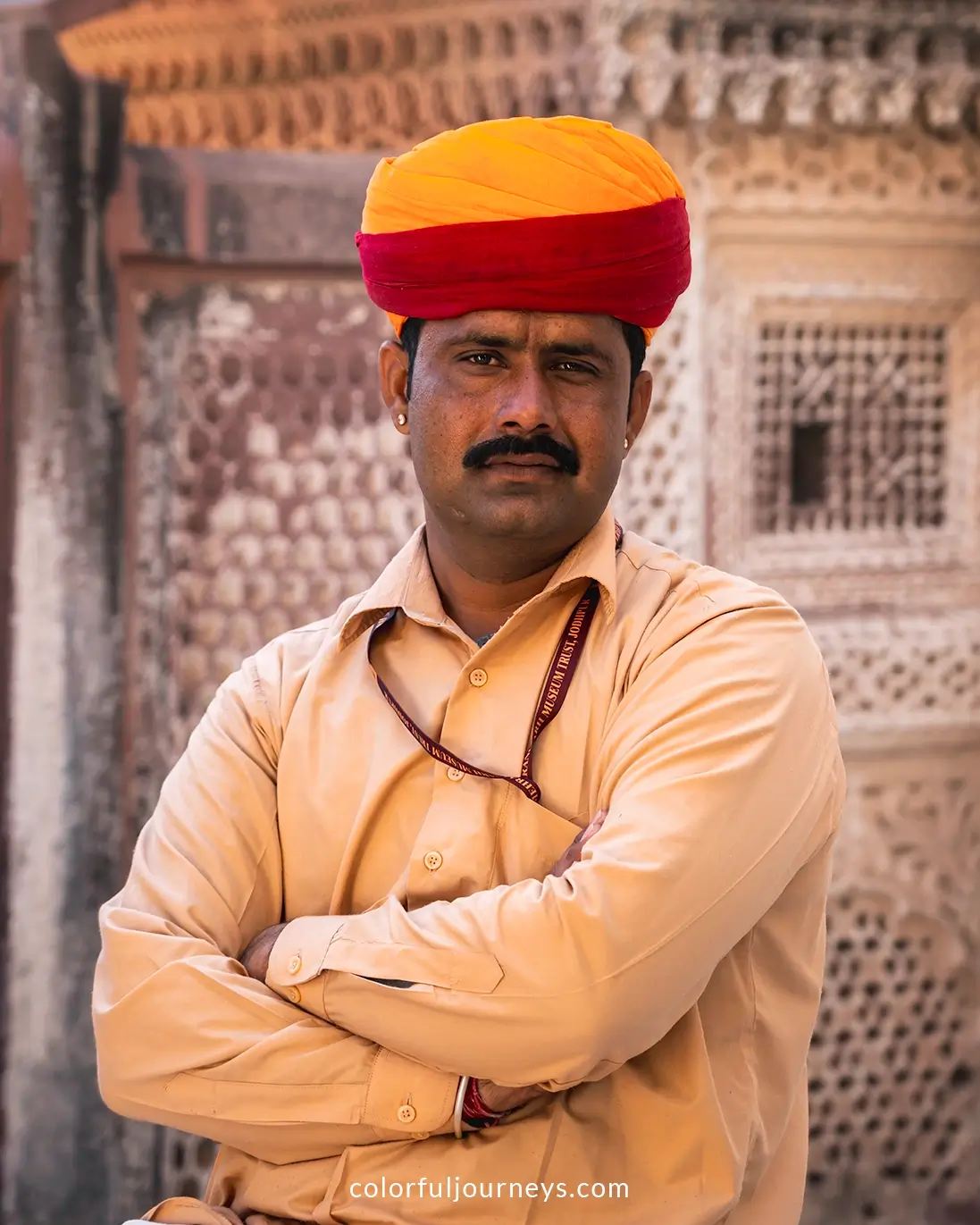
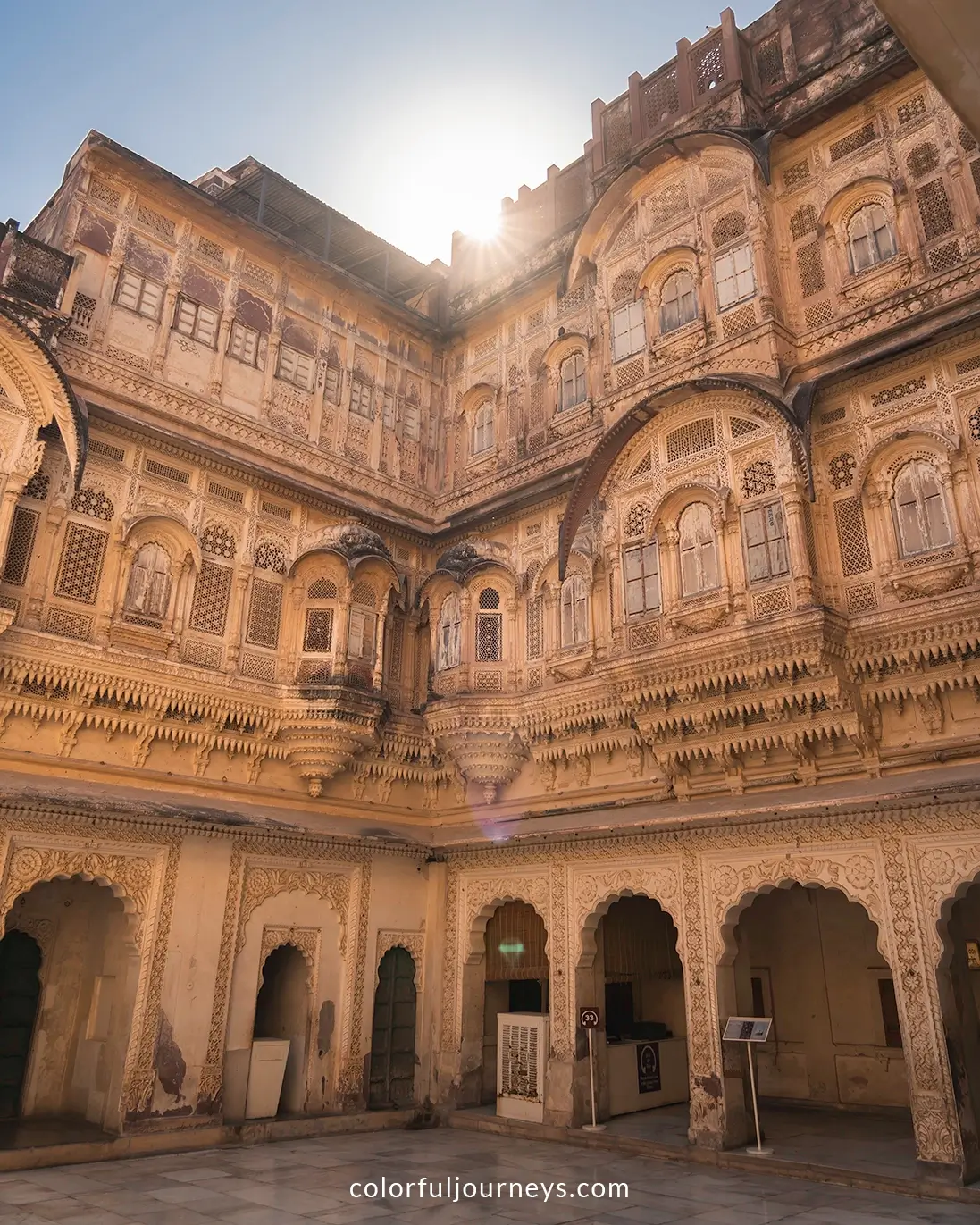
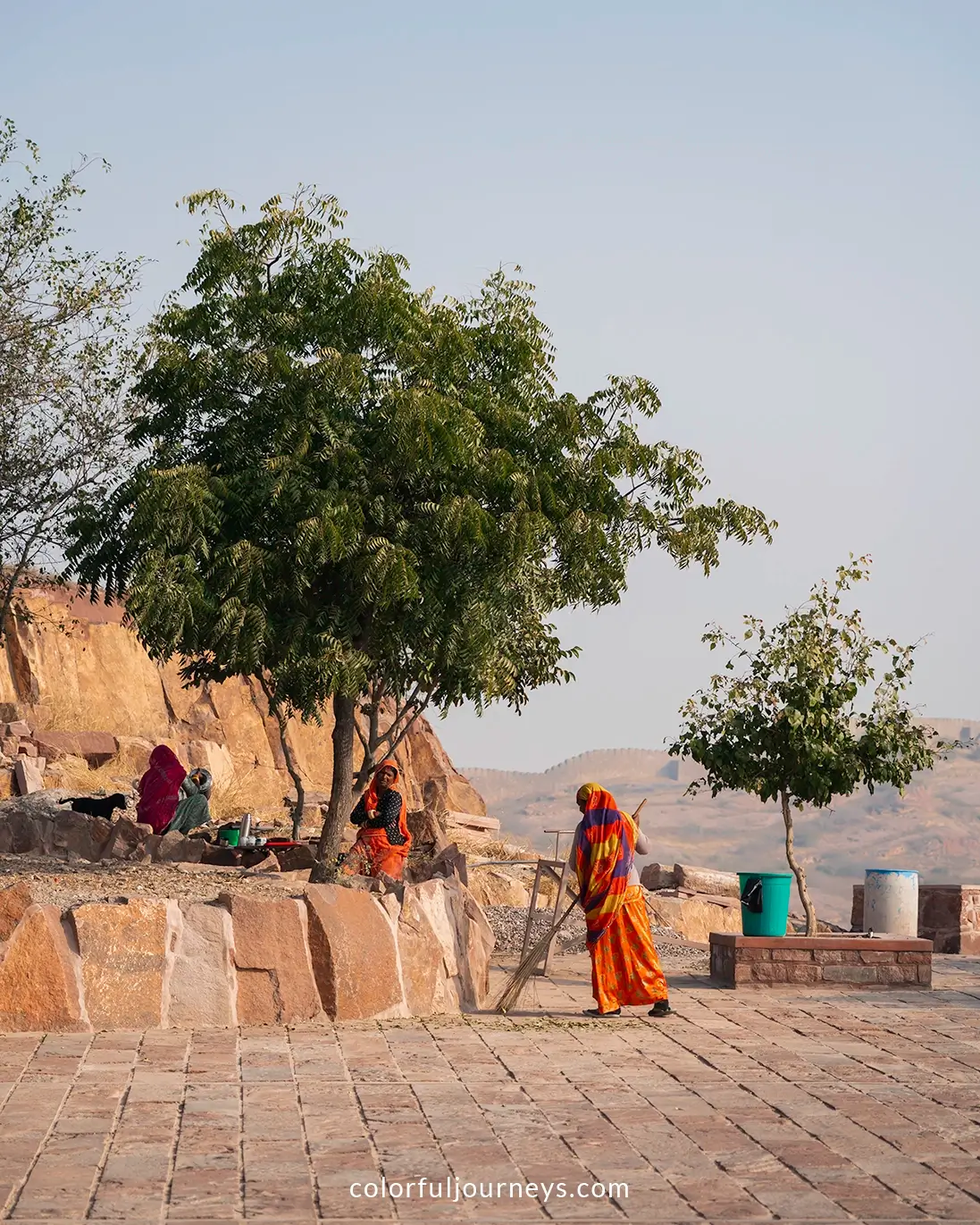
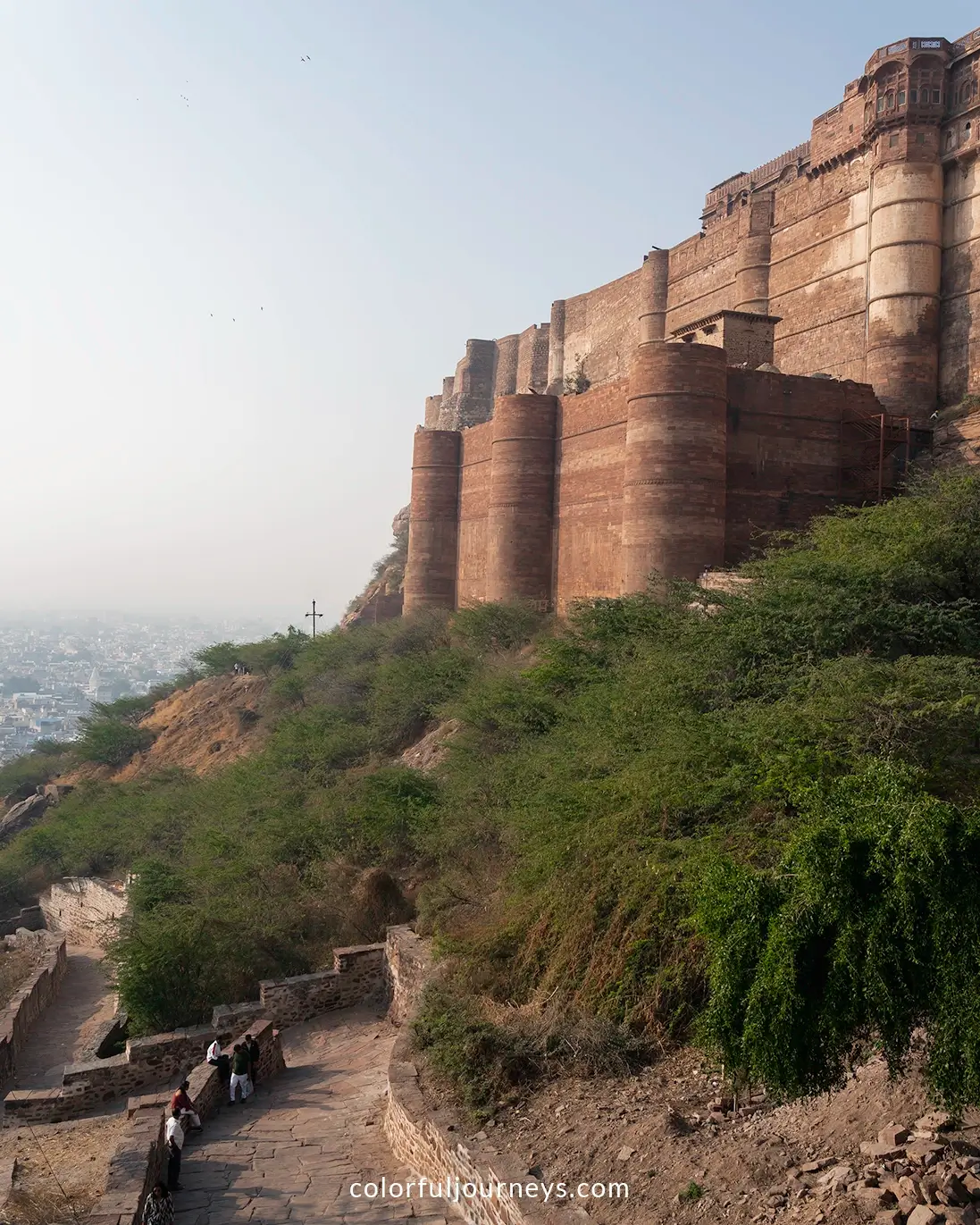

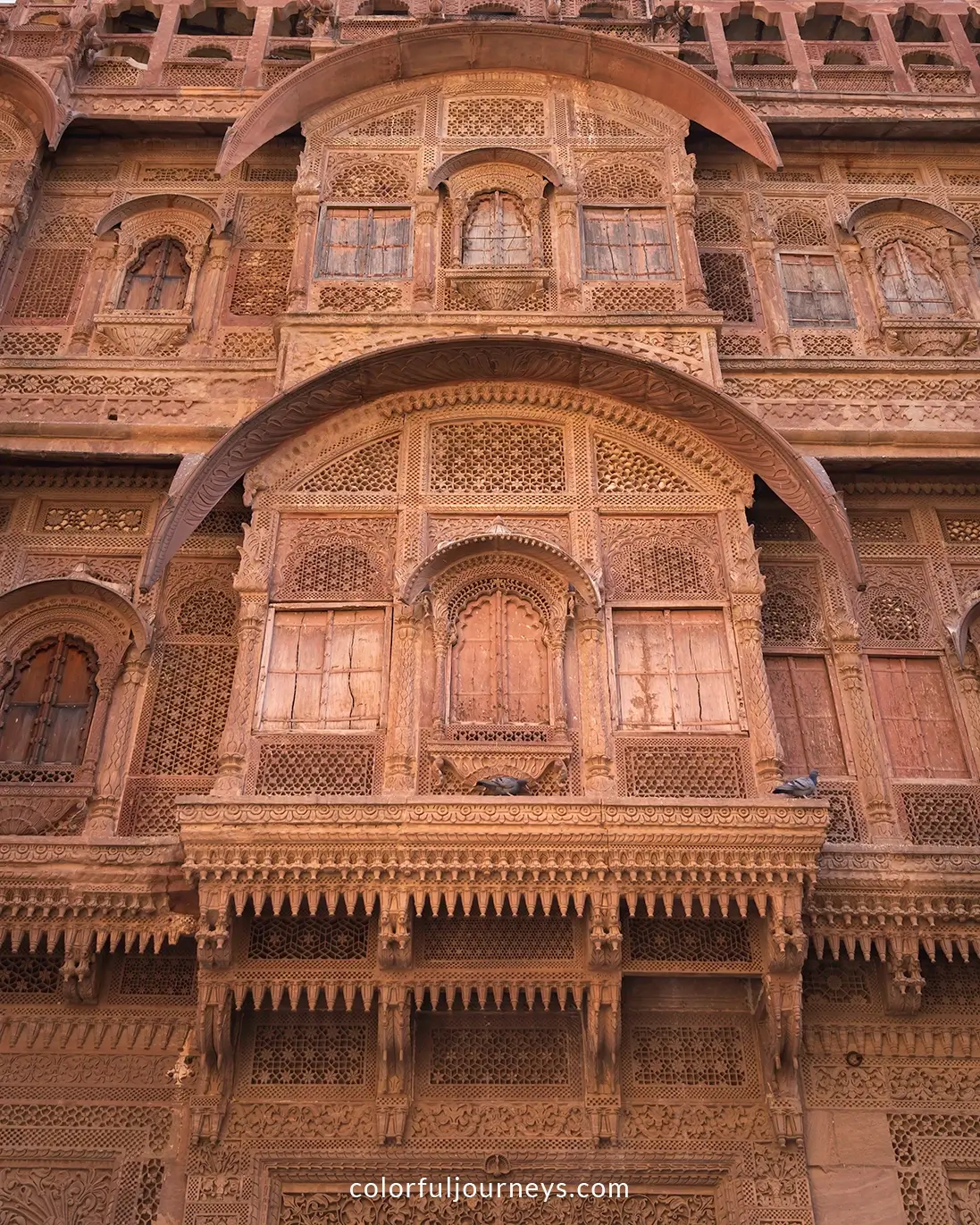
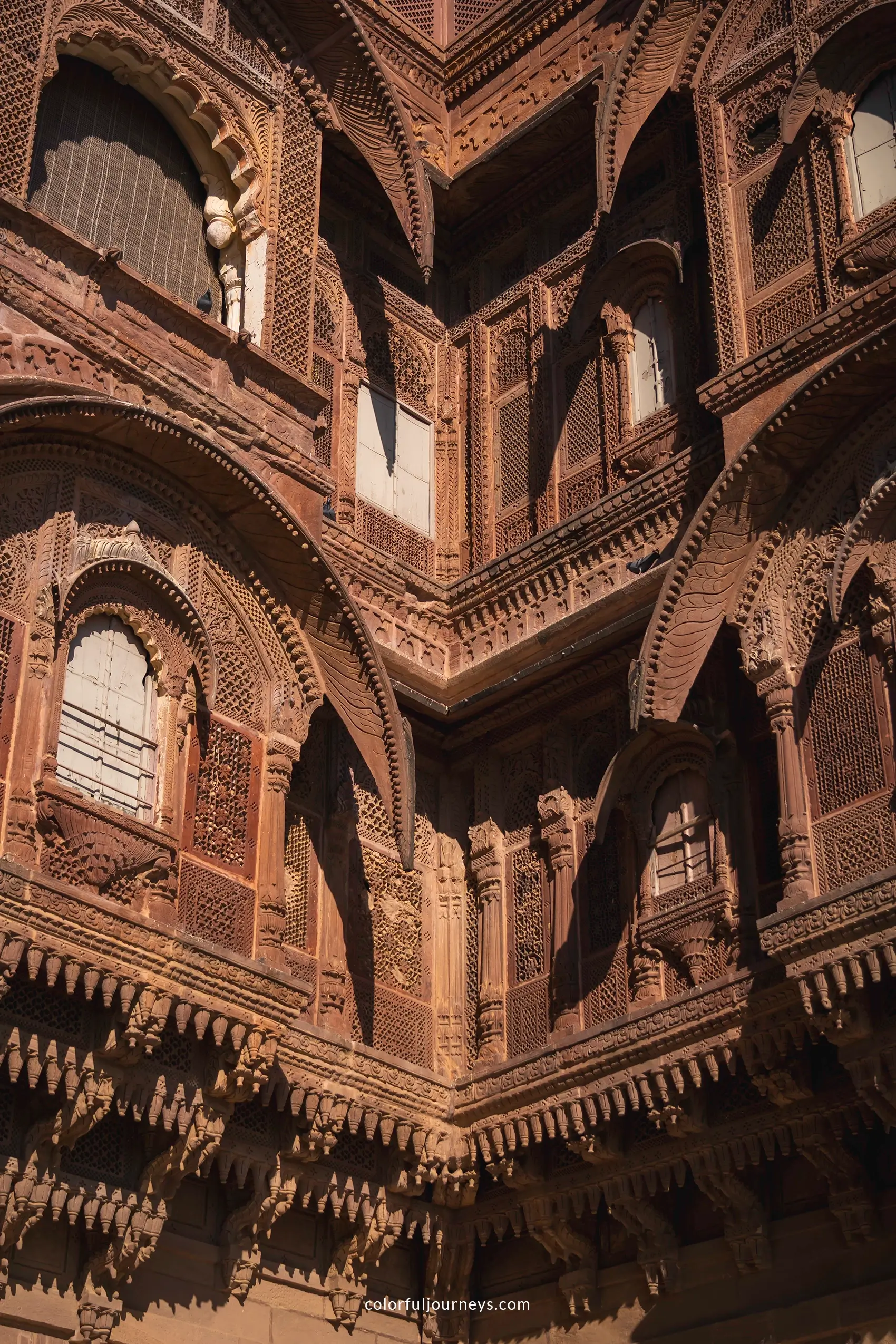


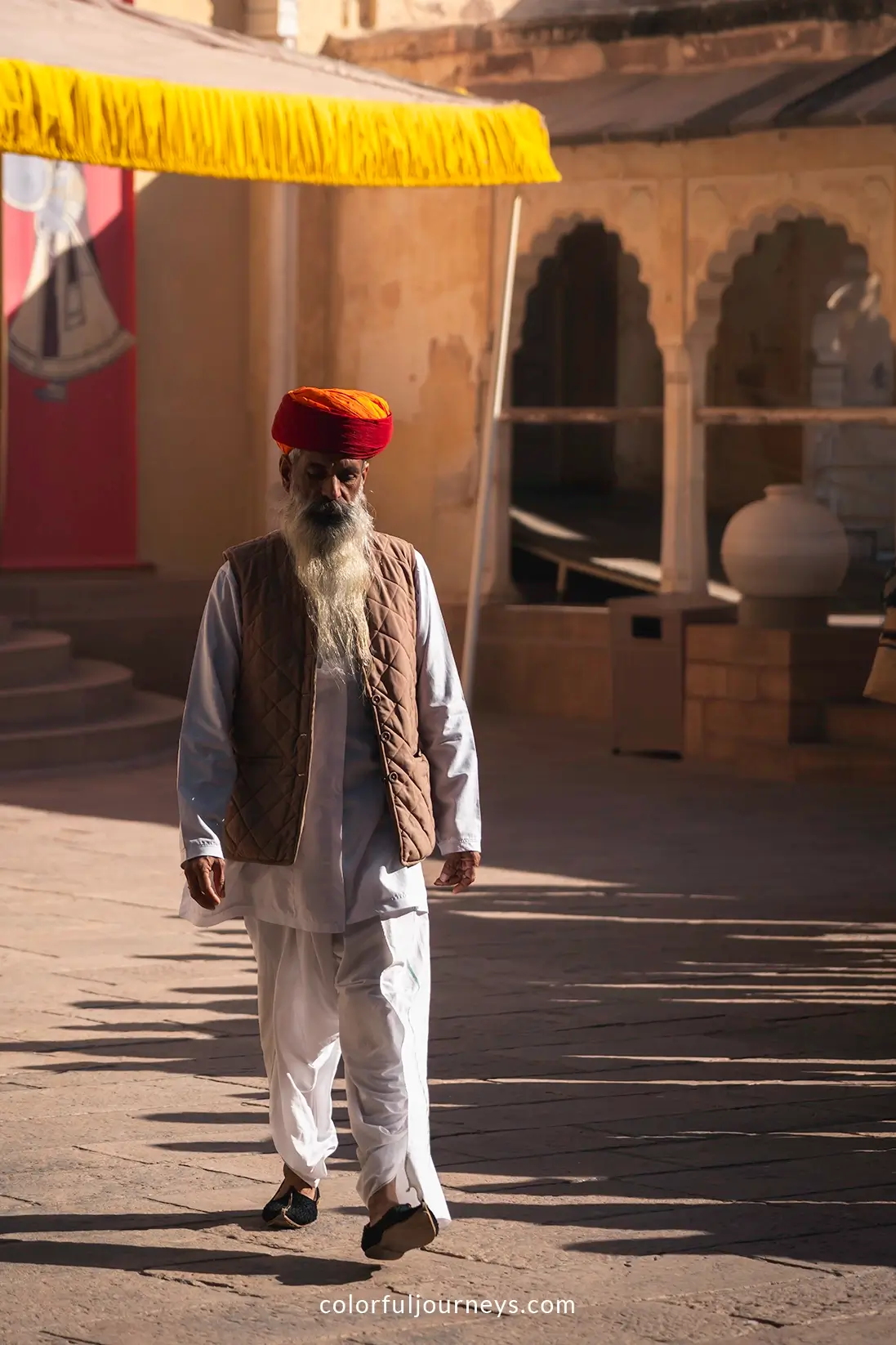
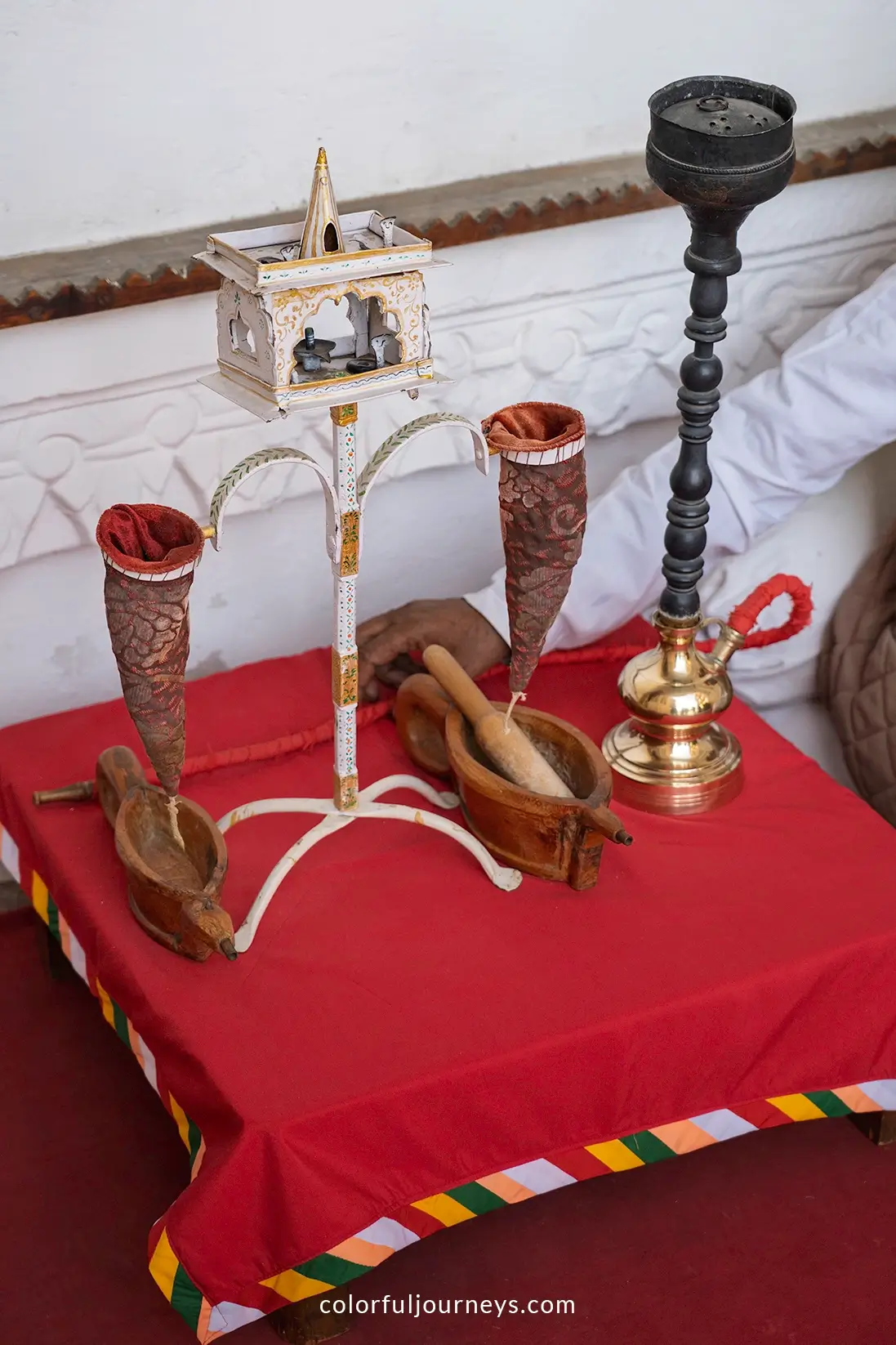
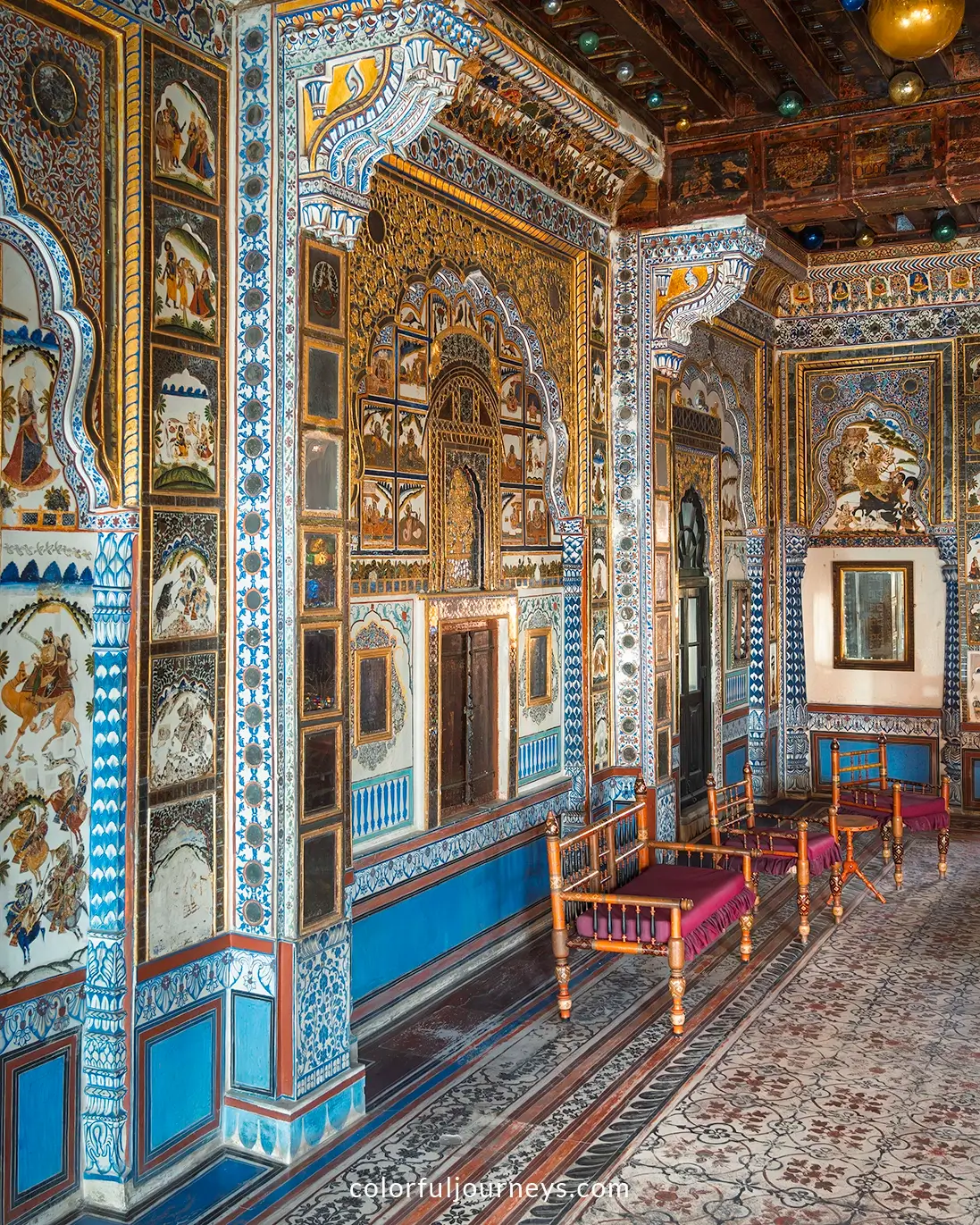
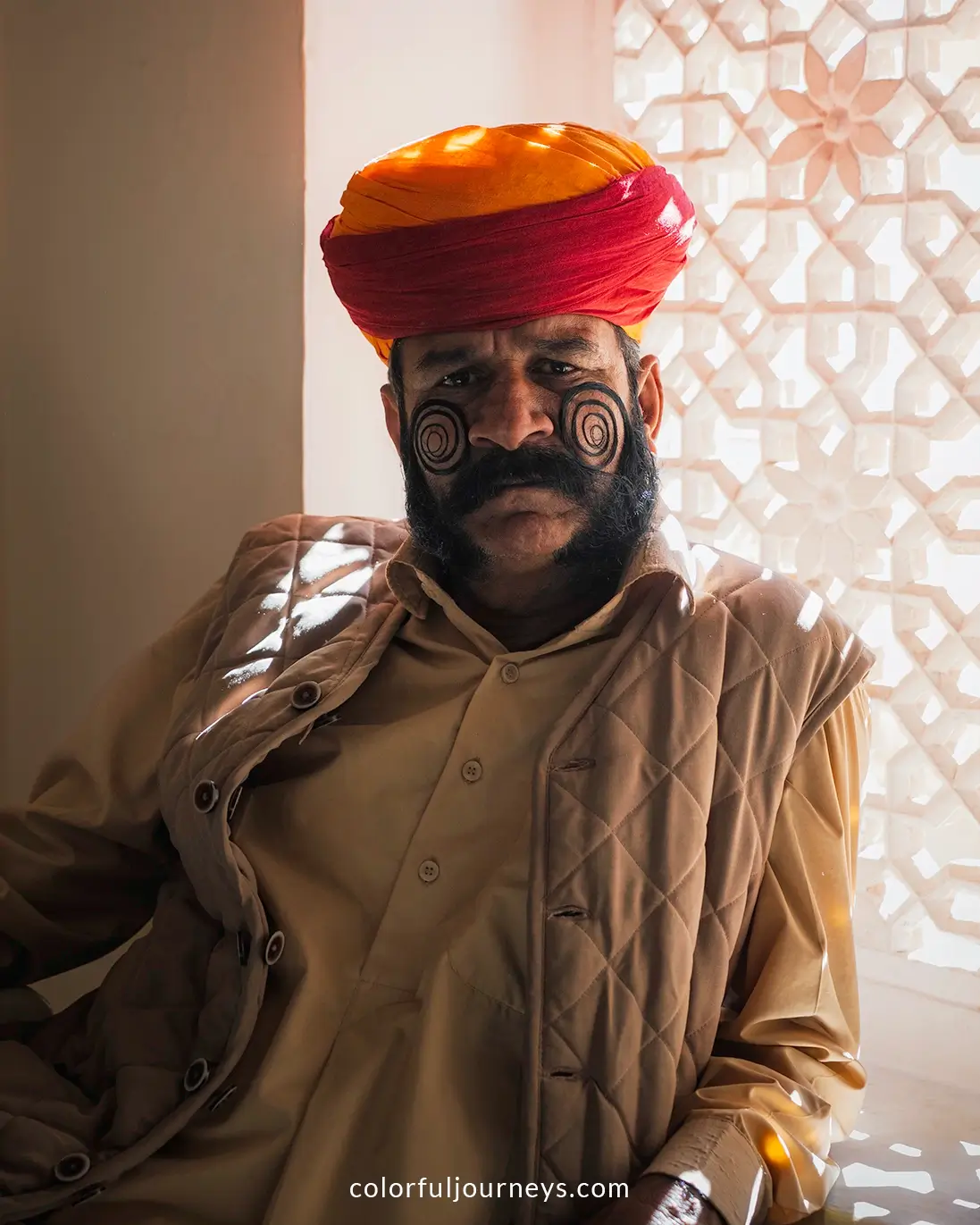
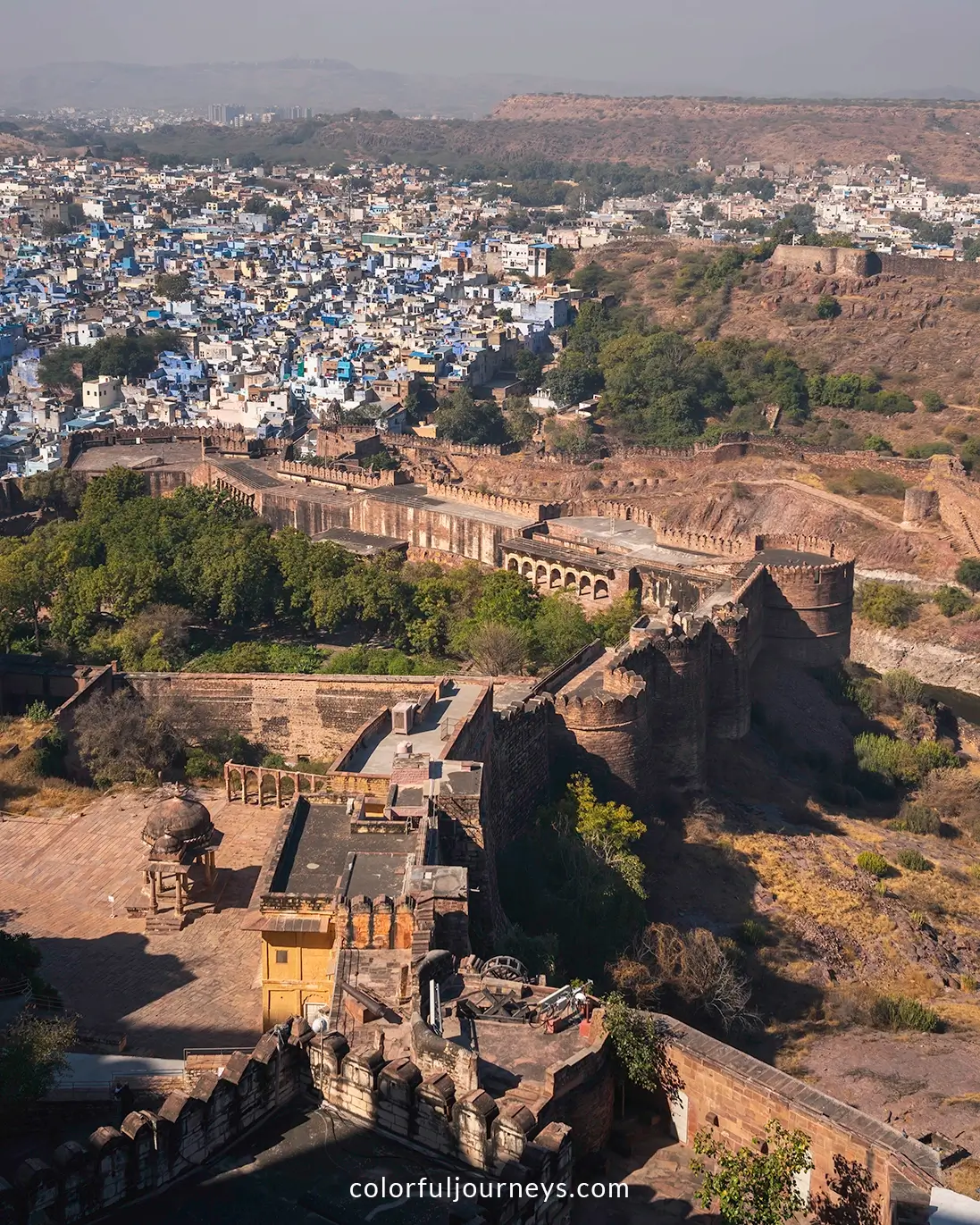
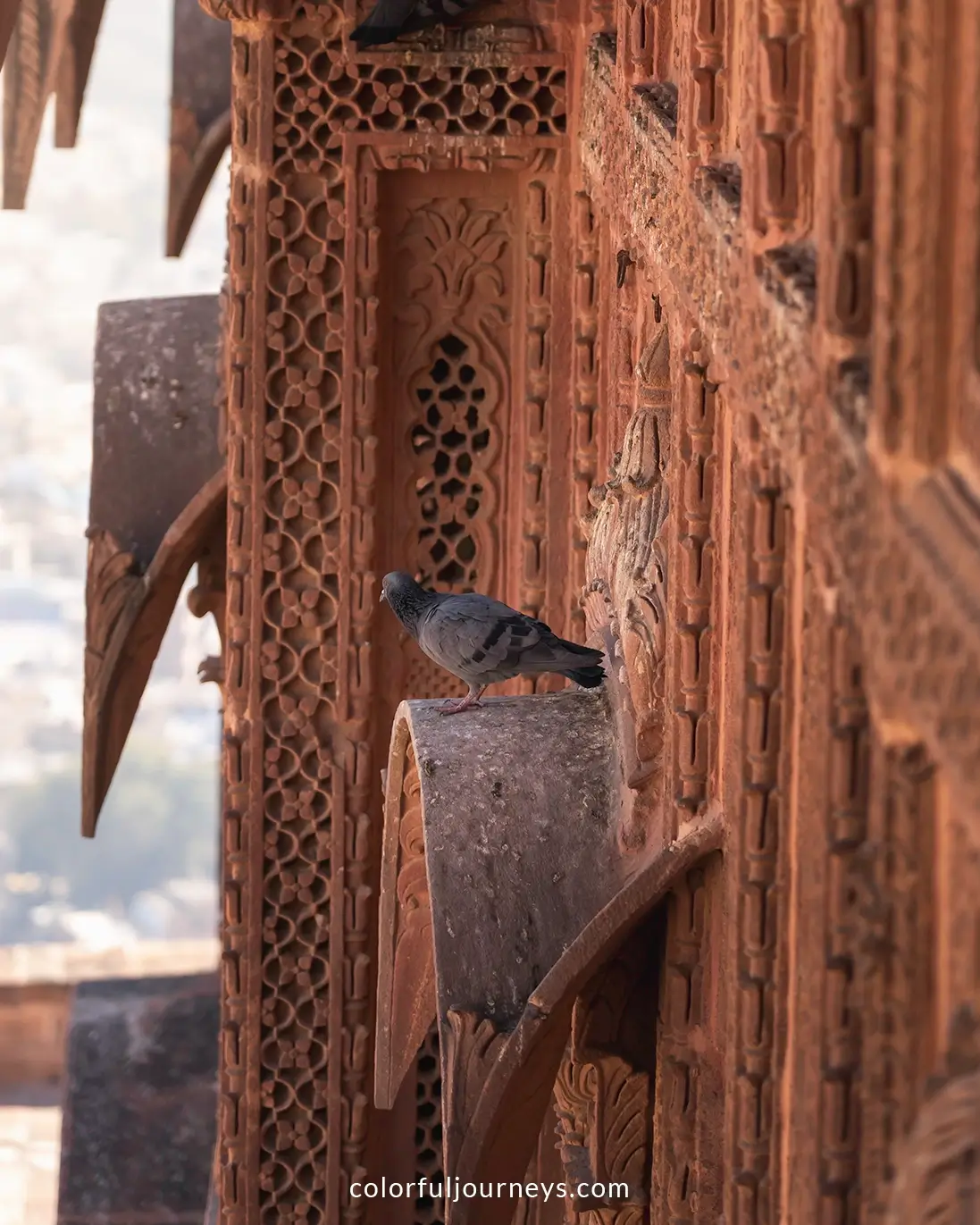
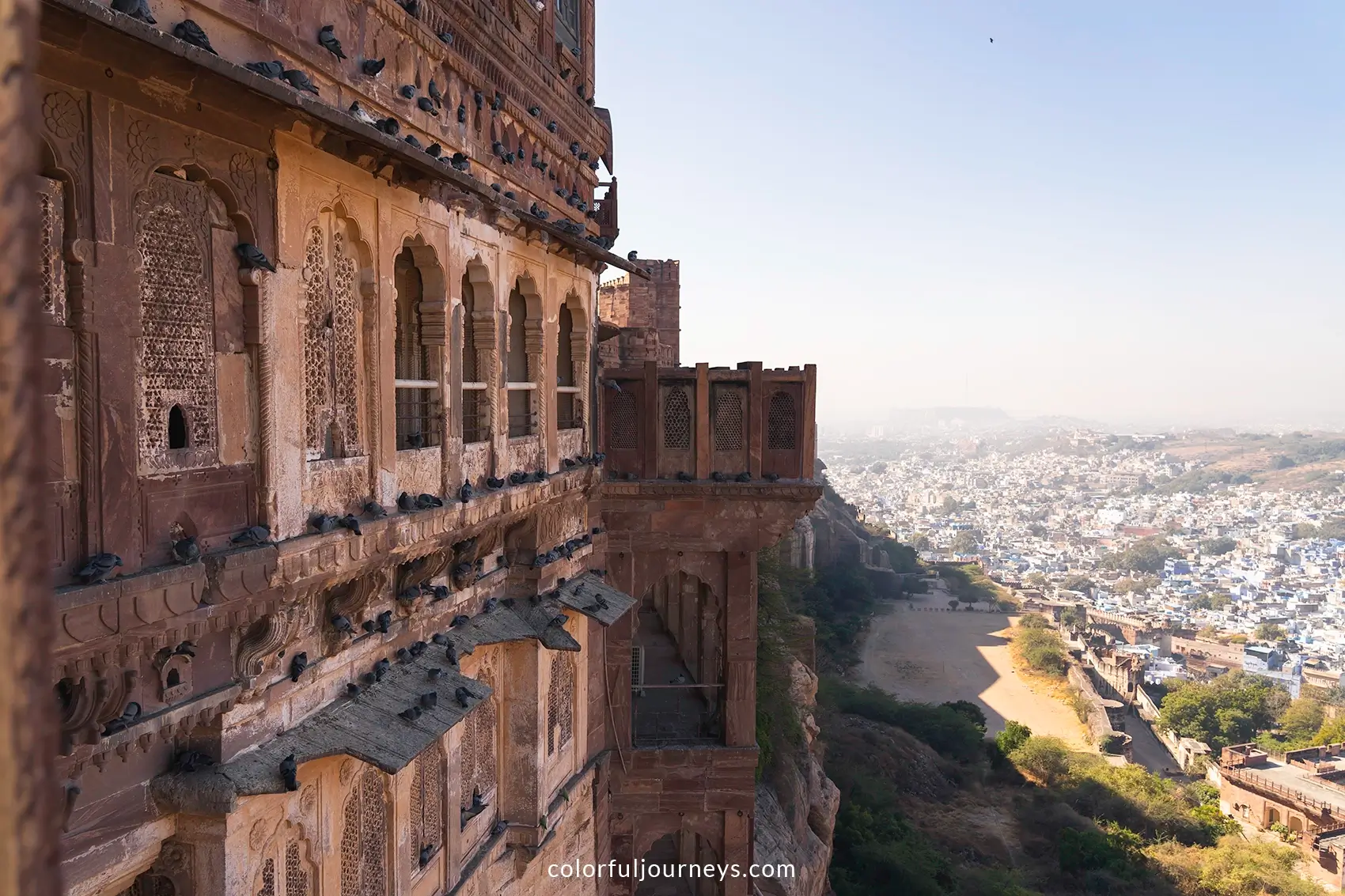

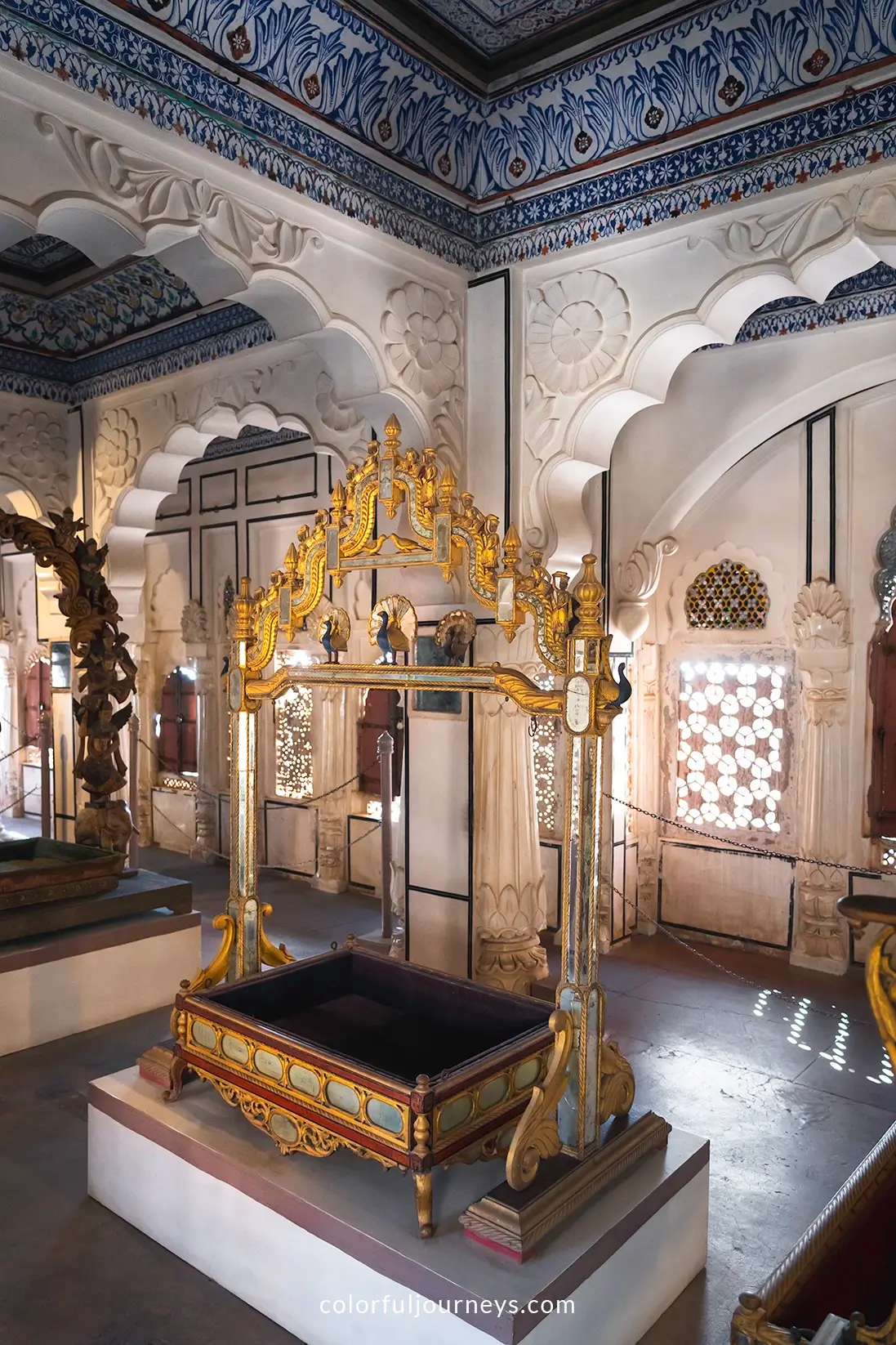
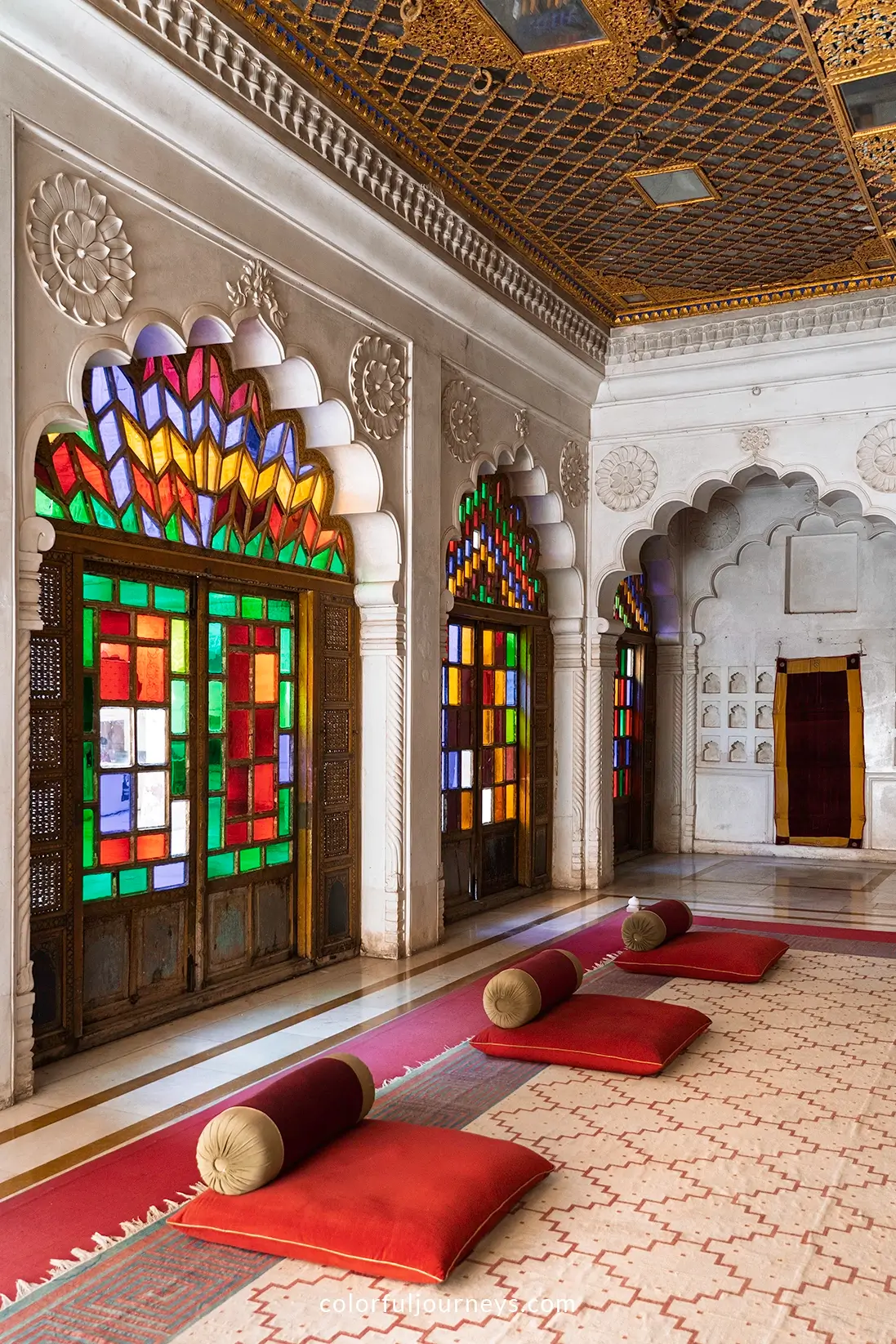
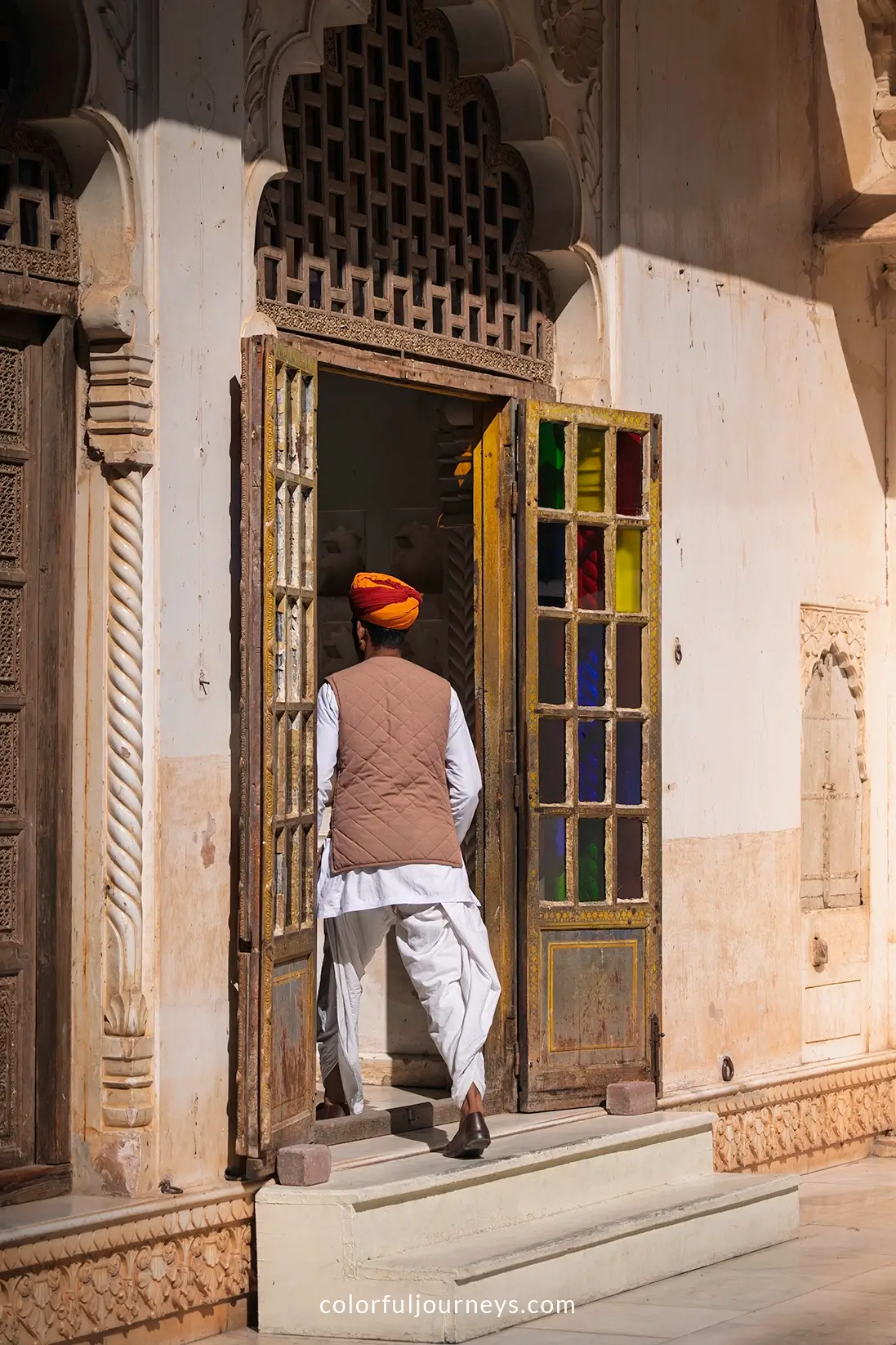
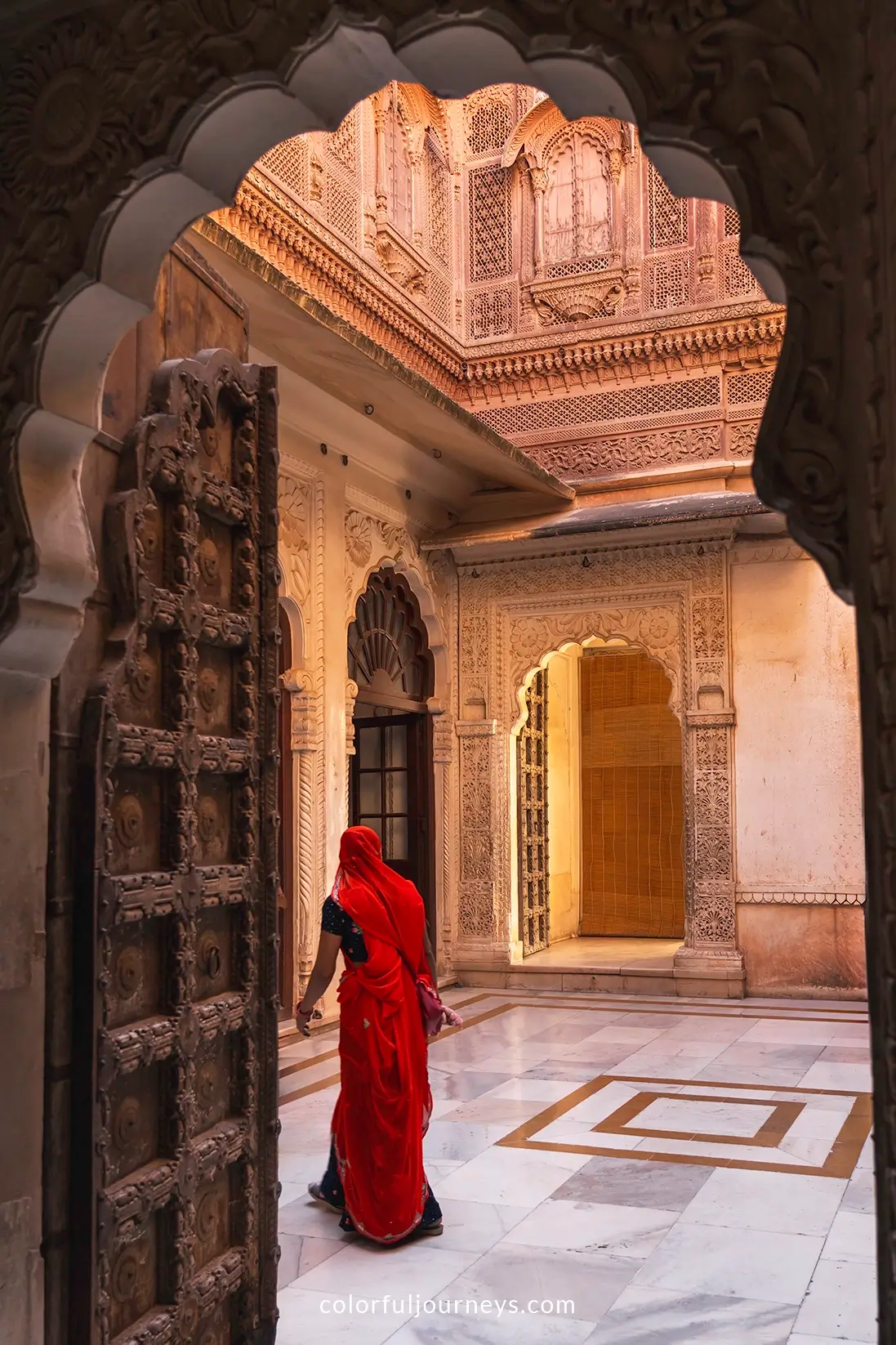
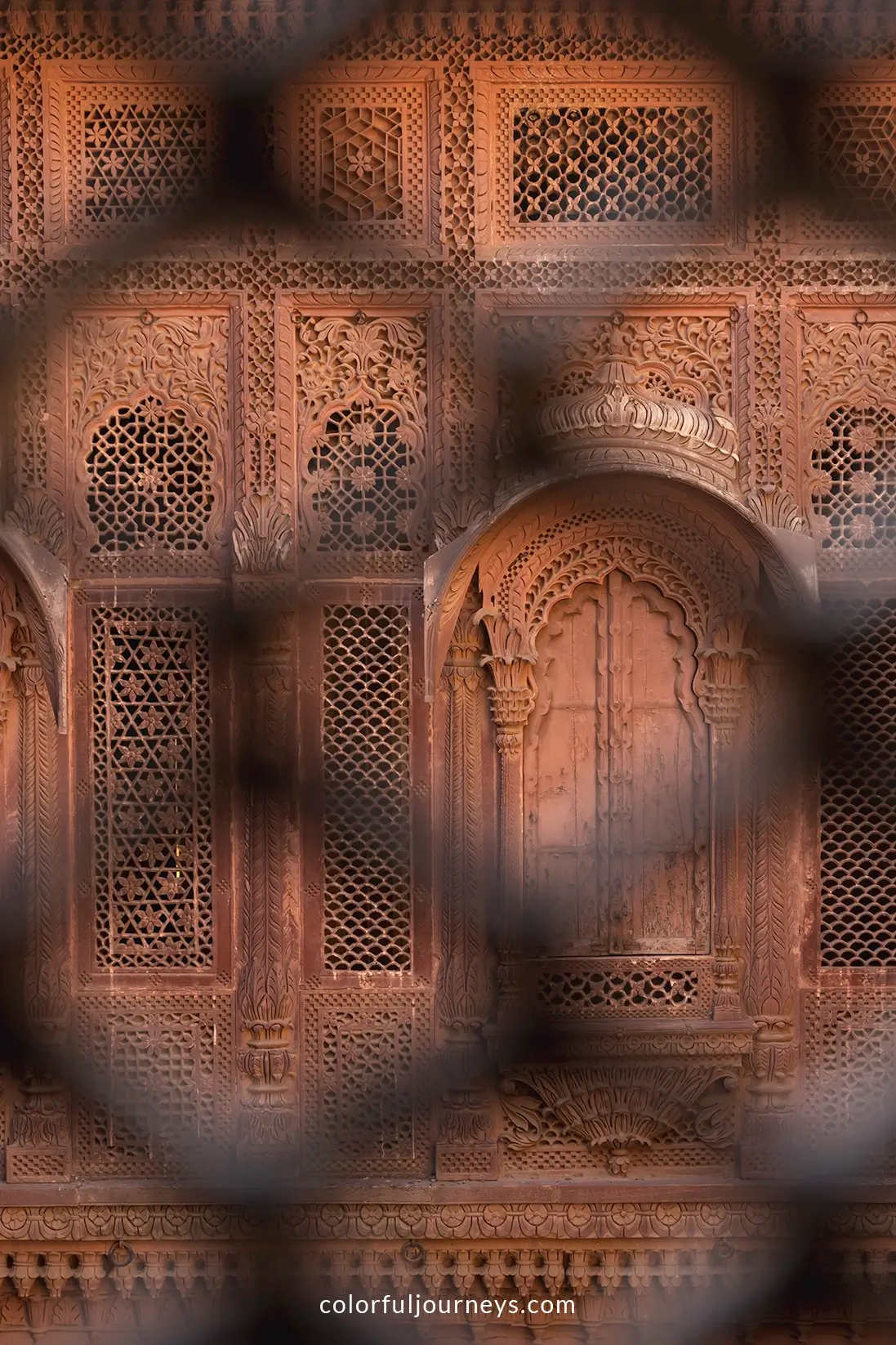
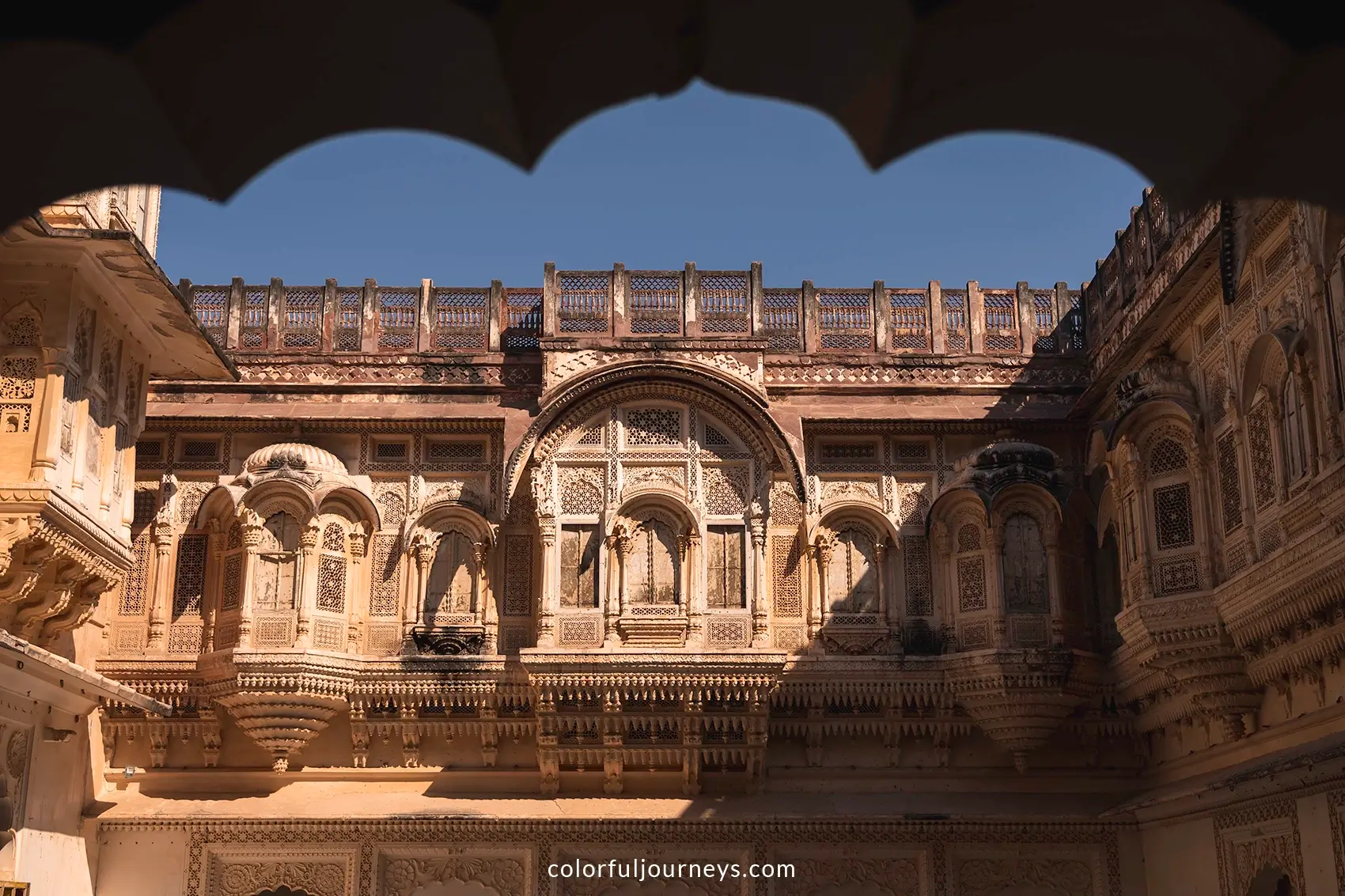
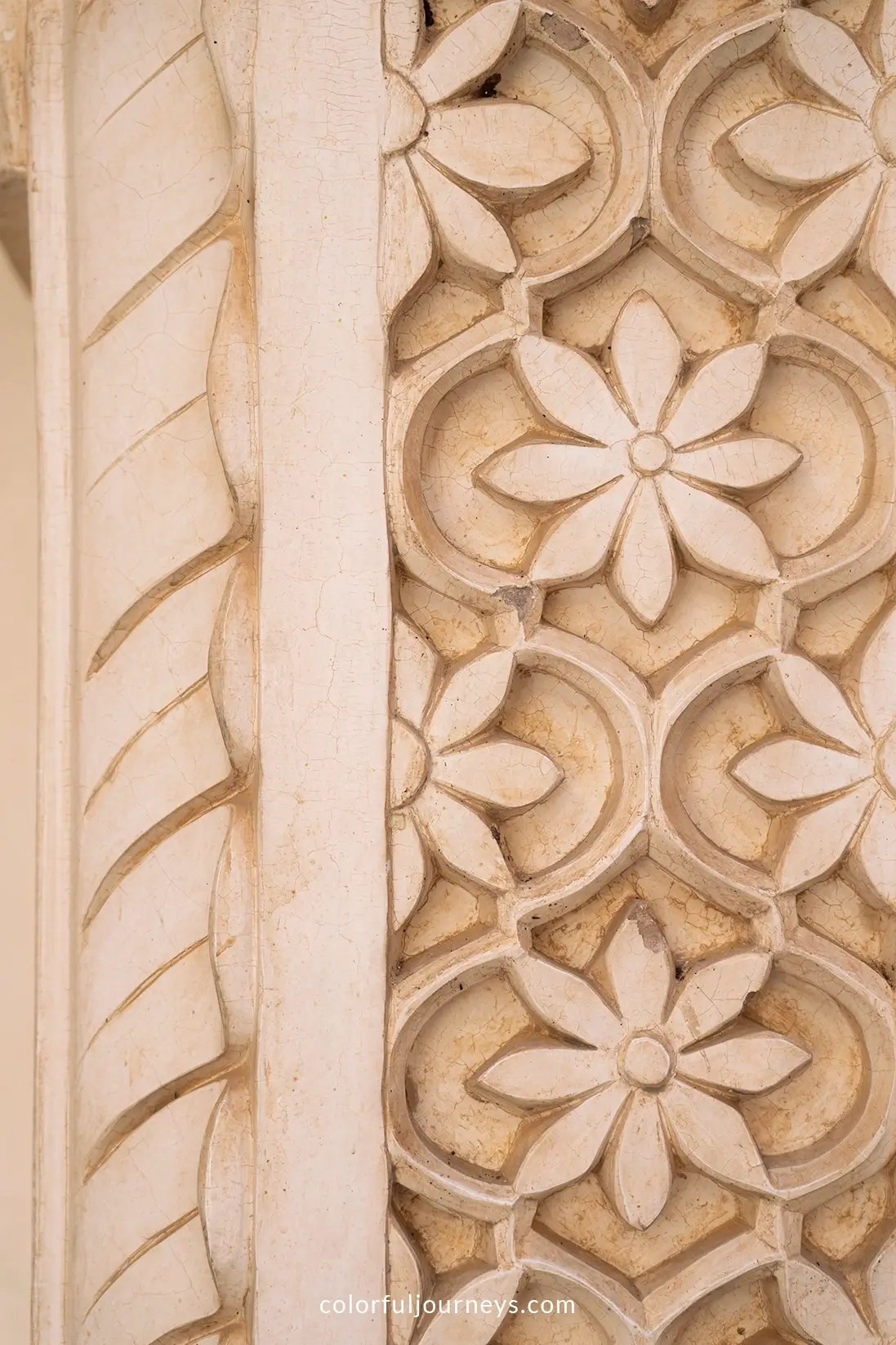
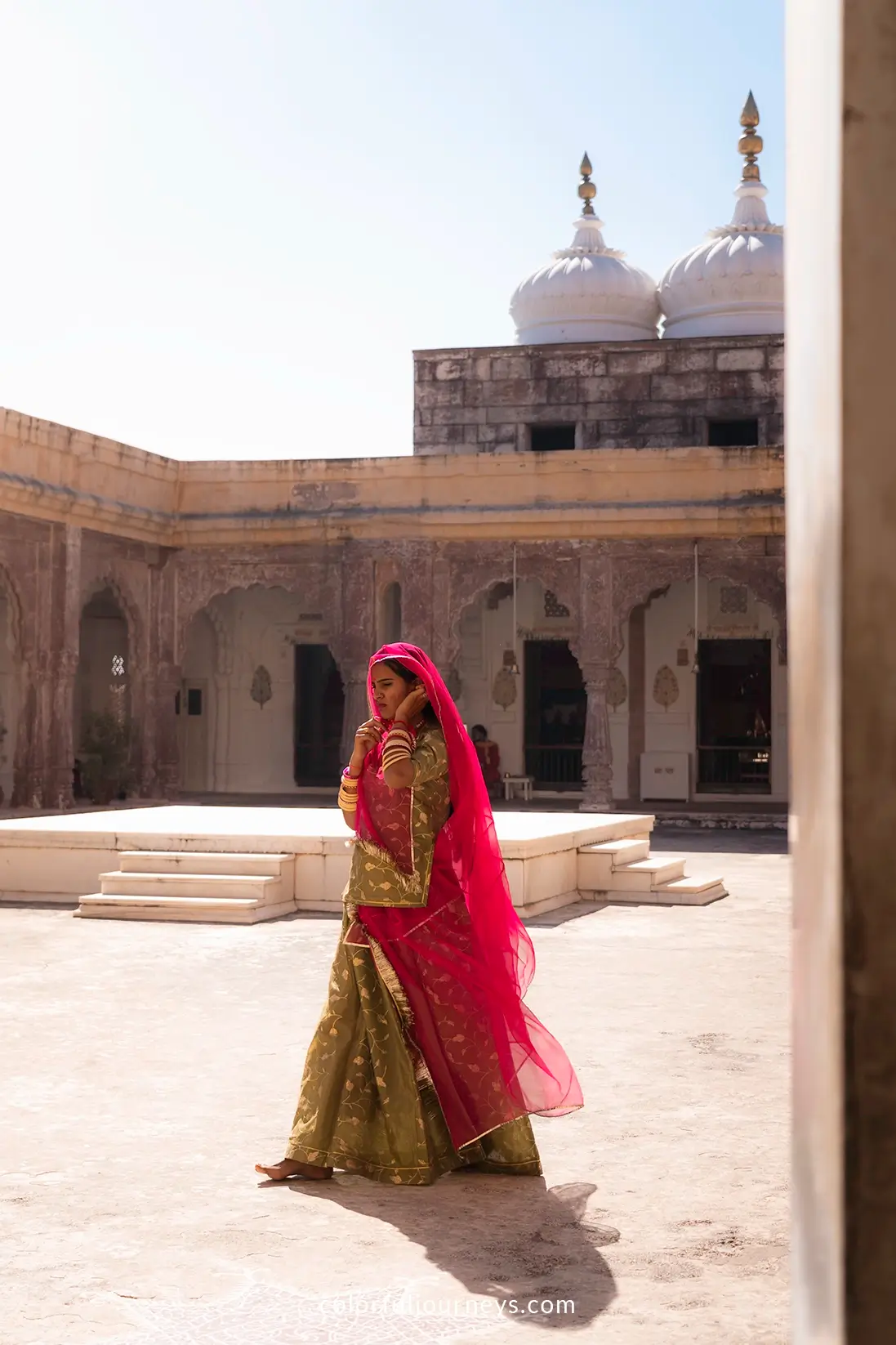
.webp)
.webp)
